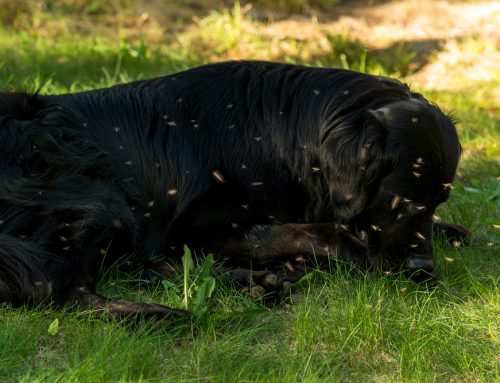
As spring spirals toward summer, the mountains of Montana—especially those around Billings—become a hot bed for reptilian life. Chief among the cold-blooded community calling our area home are rattlesnakes. Rattlers are a reality of life here in Billings, and as such it’s more than just wise to know how to protect your pets from the threat these serpents pose.
Knowing What to Look For
The first step in keeping both you and your pet safe from the threat of a rattlesnake bite is knowing what to look for and where to look. Of the 10 snake species that live in Montana, only the Prairie (or “western”) rattlesnake is venomous. Typically found in open, arid country, these snakes often den on the south-facing slopes of rocky outcroppings.
Keeping Your Pet Under Control
Contrary to what you might think, rattlers aren’t just hanging out waiting to strike down the first creature to cross their path. Rattlesnakes are actually quite shy in their nature and only attack if they feel threatened or under attack.
Because of this, the most important aspect to keeping your pet safe when out and about (or even on your own property) is to keep them on-leash and under your control. Training your dog to immediately obey the basic safety commands is also vitally important for their safety regardless of the terrain, but especially when in rattlesnake country. Likewise, training your dog to develop an aversion to the rattling of a rattlesnake can also help to keep them out of harm’s way.
Proactive Prevention
Because dogs don’t inherently know to stay away from venomous snakes, pets that are exposed to rattlesnakes are about 20 times as likely as humans to be bitten and 25 times more likely than humans to die from a rattlesnake bite when bitten. In fact, dogs and cats are over 300 times more likely to be bitten by a venomous snake than to get rabies.
So, how can you protect your pet in the face of this potential threat?
By far, the best course of action is to get your dog on a course of preventative “vaccinations” to help protect him or her against the rattler’s venomous bite. The vaccine works by creating protective antibodies that help neutralize venom, so dogs experience less pain and swelling after a snake bite.
Not only does this preventative reduce the risk of a bite becoming fatal (especially if your dog is bitten in the backcountry, miles away from immediate veterinary care), but it also lessens the odds that your dog will need an antivenin, which is both costly and has a side-effect risk factor of its own.
Once your dog has received his or her first vaccination, a booster should be administered approximately 1 month later, followed by annual boosters in the spring before peak rattlesnake season. The vaccine’s protective effect is most evident 4 to 6 weeks after the initial vaccination or booster and will decline over time. For dogs that are exposed to rattlesnakes for more than 6 months out of the year, biannual boosters are recommended.
With this amazing preventative available, there is no reason to lose your beloved dog to snakebite this summer. If you have any questions, concerns, or are just generally curious about this course of treatment, please give us a call. We’re always happy to help.






